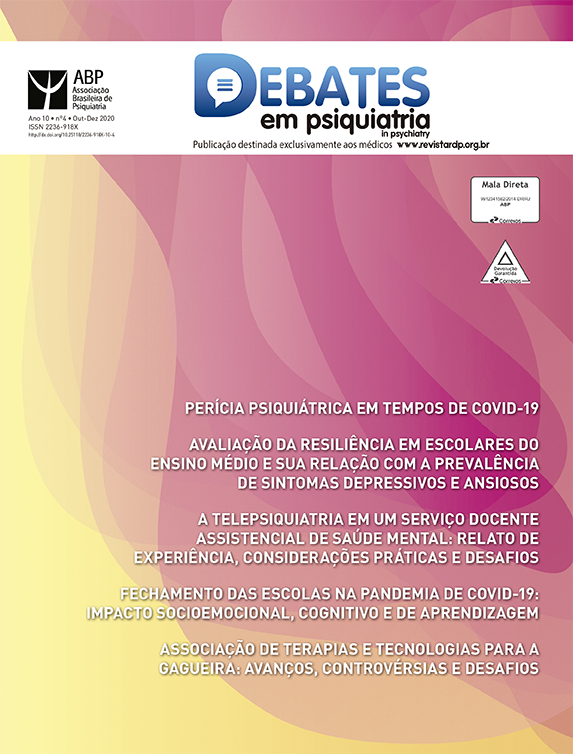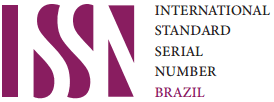Association of therapies and technologies for stuttering: advances, controversies and challenges
DOI:
https://doi.org/10.25118/2763-9037.2020.v10.22Keywords:
Stuttering, treatment, technologyAbstract
In this paper we discuss how the use of technologies (such as virtual reality) associated with modern treatment approaches (such as cognitive behavioral therapy [CBT] with mindfulness) can contribute to moreeffective results in the treatment of stuttering. Old treatments, which focused solely on behavioral therapy, with priority use of exposure therapy, have been replaced and/or associated with new approaches using CBT as the basis of the treatment process. Currently, protocols that aim to spread the use of virtual reality technologies, video games and transcranial stimulation with this new expanded therapeutic focus, aiming to decrease anticipatory/social anxiety together while at the same time gain full attention and perception of internal and external anxiety triggers, are consistently changing the scenario of stuttering treatment. In this article, we will consider several seminal and new works that demonstrate that simulation technologies of real life situations are the practices that have shown the best results in the treatment of stuttering.
Downloads
Metrics
References
Marengo L, Ferreira LN, Rivero TS, Godoy JC. A critical view of a treatment intervention for stuttering based on video games. Int J Psychol Neurosci. 2015;2:235-50.
Lavender TJ, Gromala D. Audition, the game. Procedia Comput Sci. 2012;15:187-92. DOI: https://doi.org/10.1016/j.procs.2012.10.070
American Psychiatric Association. Diagnostic and Statistical Manual of Mental Disorders, Fifth Edition (DSM-5). Arlington: American Psychiatric Publishing; 2013. DOI: https://doi.org/10.1176/appi.books.9780890425596
Perez HR, Stoeckle JH. Stuttering: clinical and research update. Can Fam Physician. 2016;62:479-84.
Walsh B, Mettel KM, Smith A. Speech motor planning and execution deficits in early childhood stuttering. J Neurodev Disord. 2015;7:27. DOI: https://doi.org/10.1186/s11689-015-9123-8
The Stuttering Foundation. Electronic devices, software and Apps [Internet]. 2019 [cited 2020 Oct 13]. www.stutteringhelp.org/electronicdevices-software-and-apps
Fernández-Zúñiga A, de León M. Conceptos básicos y abordaje de la tartamudez. FMC. 2011;18:193-9. DOI: https://doi.org/10.1016/S1134-2072(11)70081-0
Reilly S, Onslow M, Packman A, Cini E, Conway L, Ukoumunne OC, et al. Natural history of stuttering to 4 years of age: a prospective community-based study. Pediatrics. 2013;132:460-7. DOI: https://doi.org/10.1542/peds.2012-3067
McAllister J, Collier J, Shepston L. The impact of adolescent stuttering and other speech problems on psychological well-being in adulthood: evidence from a birth cohort study. Int J Lang Commun Disord. 2013;48:458-68. DOI: https://doi.org/10.1111/1460-6984.12021
Felsenfeld S, Kirk KM, Zhu G, Statham DJ, Neale MC, Martin NG. A study of the genetic and environmental etiology of stuttering in a selected twin sample. Behav Genet. 2000;30:359-66. DOI: https://doi.org/10.1023/A:1002765620208
Craig A, Tran Y. Trait and social anxiety in adults with chronic stuttering: conclusions following meta-analysis. J Fluency Disord. 2014;40:35-43. DOI: https://doi.org/10.1016/j.jfludis.2014.01.001
Helgadottir FD, Menzies RG, Onslow M, Packman A, O’Brian S. A standalone Internet cognitive behavior therapy treatment for social anxiety in adults who stutter: CBTpsych. J Fluency Disord. 2014;41:47-54. DOI: https://doi.org/10.1016/j.jfludis.2014.04.001
Brignell A, Krahe M, Downes M, Kefalianos E, Reilly S, Morgan AT. A systematic review of interventions for adults who stutter. J Fluency Disord. 2020;64:105766. DOI: https://doi.org/10.1016/j.jfludis.2020.105766
Mongia M, Gupta AK, Vijay A, Sadhu R. Management of stuttering using cognitive behavior therapy and mindfulness meditation. Ind Psychiatry J. 2019;28:4-12. DOI: https://doi.org/10.4103/ipj.ipj_18_19
Boyle MP. The impact of causal attribution on stigmatizing attitudes toward a person who stutters. J Commun Disord. 2016;60:14-26. DOI: https://doi.org/10.1016/j.jcomdis.2016.02.002
Rodríguez-Carvajal R, Moreno-Jiménez JE, García-Rubio C, Castillo R, Montero I. Efectos del entrenamiento breve en mindfulness en tartamudez: un estudio de caso único [Intetrnet]. 2017 [cited 2020 Oct 13]. blogs.ua.es/aesppu/files/2017/10/13Me14-Tartamudez.pdf
Harley J. The Role of attention in therapy for children and adolescents who stutter: cognitive behavioral therapy and mindfulnessbased interventions. Am J Speech Lang Pathol. 2018;27:1139-51. DOI: https://doi.org/10.1044/2018_AJSLP-ODC11-17-0196
Beilby JM, Byrnes ML, Yaruss JS. Acceptance and commitment therapy for adults who stutter: psychosocial adjustment and speech fluency. J Fluency Disord. 2012;37:289-99. DOI: https://doi.org/10.1016/j.jfludis.2012.05.003
De Veer S, Brouwers A, Evers W, Tomic W. A pilot study of the psychological impact of the mindfulness-based stress reduction program on persons who stutter. Eur J Psychother Couns. 2009;9:39-56.
Ingham RJ, Ingham JC, Bothe AK, Wang Y, Kilgo M. Efficacy of the modifying phonation intervals (MPI) stuttering treatment program with adults who stutter. Am J Speech Lang Pathol. 2015;24:256-71. DOI: https://doi.org/10.1044/2015_AJSLP-14-0076
Chesters J, Möttönen R, Watkins KE. Transcranial direct current stimulation over left inferior frontal cortex improves speech fluency in adults who stutter. Brain. 2018;141:1161-71. DOI: https://doi.org/10.1093/brain/awy011
Rivero T. A construção de um método para o desenvolvimento de um videogame para treino de controle inibitório para adolescentes com transtorno do déficit de atenção e hiperatividade [dissertation]. São Paulo: Universidade Federal de São Paulo; 2016.
Baranowski T, Buday R, Thompson D, Lyons EJ, Lu AS, Baranowski J. Developing games for health behavior change: getting started. Games Health J. 2013;2:183-90. DOI: https://doi.org/10.1089/g4h.2013.0048
Rivero TS, Núñez LM, Pires EU, Bueno OF. ADHD rehabilitation through video gaming: a systematic review using PRISMA guidelines of the current findings and the associated risk of bias. Front Psychiatry. 2015;6:151. DOI: https://doi.org/10.3389/fpsyt.2015.00151
Scheurich JA, Beidel, DC, Vanryckeghem M. Exposure therapy for social anxiety disorder in people who stutter: an exploratory multiple baseline design. J Fluency Disord. 2019;59:21-32. DOI: https://doi.org/10.1016/j.jfludis.2018.12.001
Klinger E, Bouchard S, Légeron P, Roy S, Lauer F, Chemin I, et al. Virtual reality therapy versus cognitive behavior therapy for social phobia: a preliminary controlled study. Cyberpsychol Behav. 2005;8:76-88. DOI: https://doi.org/10.1089/cpb.2005.8.76
Downloads
Published
How to Cite
Conference Proceedings Volume
Section
License

This work is licensed under a Creative Commons Attribution-NonCommercial 4.0 International License.
Debates em Psiquiatria allows the author (s) to keep their copyrights unrestricted. Allows the author (s) to retain their publication rights without restriction. Authors should ensure that the article is an original work without fabrication, fraud or plagiarism; does not infringe any copyright or right of ownership of any third party. Authors should also ensure that each one complies with the authorship requirements as recommended by the ICMJE and understand that if the article or part of it is flawed or fraudulent, each author shares responsibility.
Attribution-NonCommercial 4.0 International (CC BY-NC 4.0) - Debates em Psiquiatria is governed by the licencse CC-By-NC
You are free to:
- Share — copy and redistribute the material in any medium or format
- Adapt — remix, transform, and build upon the material
The licensor cannot revoke these freedoms as long as you follow the license terms. Under the following terms:
- Attribution — You must give appropriate credit, provide a link to the license, and indicate if changes were made. You may do so in any reasonable manner, but not in any way that suggests the licensor endorses you or your use.
- NonCommercial — You may not use the material for commercial purposes.
No additional restrictions — You may not apply legal terms or technological measures that legally restrict others from doing anything the license permits.




























